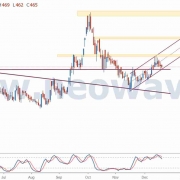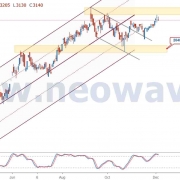(51) New Tips & Hints
Now that many markets trade 24-hours-a-day, how should I construct my charts?
ANSWER:
This is a great question sent in by Tseng Yung-Chih (location confidential). The construction of charts, for both wave analysis and trading, should follow a natural progression. For the most part, before 24-hour markets emerged, nearly all generally recognized time frames were approximately 1/5 or 5x’s the size of the next closest (i.e., an hourly chart was approximately 1/5 of a day, a day was 1/5 of a week, a week was approximately 1/5 of a month). For whatever reason, humans seem to like dividing time into 5th’s (a Fibonacci number).
With the advent of 24-hour markets, an hour is no longer 1/5 of a day, creating a glitch in the “natural order” of things. So, what should one do? For any market that is active nearly 24-hours a day, I recommend dividing the total number of minutes in the trading day by 5. For markets like the E-Mini S&P, which is open 1440 minutes every 24 hours, that yields 288-minutes.
If doing NEoWave analysis, I would construct a wave chart showing the high and low (plotted in the order they occurred) every 288 minutes; for trading, I would employ a 288-minute bar chart. Dropping down to the next, lower level, you could either maintain a strict 1/5 relationship by using a 58-minute chart, or use its closest, and most popular neighbor, the 60-minute time frame.










دیدگاه خود را ثبت کنید
تمایل دارید در گفتگوها شرکت کنید؟در گفتگو ها شرکت کنید.